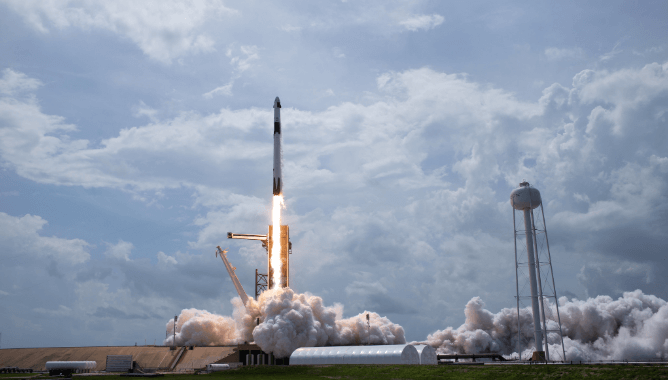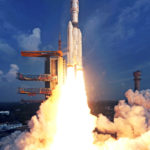Articles1 Comment

International Space Station is a habitable space station that is flying in low earth orbit. It is a multinational collaborative project between five space agencies NASA, ROSCOSMOS, JAXA, ESA, and CSA. ISS flies at an altitude of 400 km at a speed of 28800 km/h, and takes about 90 minutes to make a revolution around the earth. Astronauts working on the space station can experience 16 sunrise and sunsets every day.
ISS is used as a research laboratory in the fields of astronomy, astrobiology, meteorology, physics, physical sciences, material science, space weather, life sciences, and other fields. It is also used for testing of Spacecraft Systems and equipments. ISS is made up of pressurized habitation modules, structural trusses, photovoltaic solar arrays, thermal radiators, docking ports, experiment bays, and robotic arms.
As we move away from earth, gravity decreases, and at an altitude of ISS, there is only 90 % of earth’s gravity. Since there is a continuous state of free fall, there is an apparent state of weightlessness. However the weightlessness is affected by the drag of the residual atmosphere, vibration from the movements of mechanical systems and the crew, actuation of gyroscopes, thruster firings, and gravity gradient effects. Items at different locations within the ISS, if not attached to the station follow different orbits.
The components of the International Space Station were manufactured in various countries, being a multi-national collaborative project. The modules were from the US, Russia, Canada, Germany, Italy, and Japan. International Space Station can be added or removed from the existing structure of the space station giving greater flexibility. ISS has critical systems that support life such as atmosphere control system, water supply system, food supply facilities, sanitation, and hygiene equipment, etc. There is also atmospheric control systems, power, and thermal control systems.

ISS can bee seen as a bright white dot hours after the sunset and before the sunrise, because of the reflection from the sunlight. Due to the earth’s rotation, the space station seems to travel from west to east.
ISS flies at an altitude of 400 km at a speed of 28800 km/hr, and takes about 90 minutes to make a revolution around the earth. Astronauts working on the space station can experience 16 sunrise and sunsets every day.


1 Comment on this article